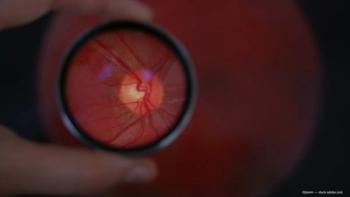
Surgical intervention beneficial to adult strabismus
Orlando—A questionnaire administered to adults who underwent surgery for strabismus showed that most patients believed any disabilities related to this condition improved after the procedure, said George R. Beauchamp, MD, FACS, professor of clinical ophthalmology, University of Texas Southwestern Medical School, Dallas.
Dr. Beauchamp discussed a multicenter study where the researchers examined several aspects of surgical treatment of strabismus in adults. As part of this study -which looked at clinical manifestations of the condition and at physician and patient perspectives-a questionnaire was developed to assess items such as the type and severity of disability in adults with strabismus.
Dr. Beauchamp reported on the data from the questionnaire in his presentation at the annual meeting of the American Association of Pediatric Ophthalmology and Strabismus earlier this year.
Results were highly significant in all categories (p <0.001), Dr. Beauchamp said. The questions about specific health issues and daily tasks generated the highest problem ratings as concerns before surgery. Patients with diplopia reported more severe problems with daily tasks and concerns about the future than patients without diplopia, he said.
After surgery, problem ratings declined on all six items (p <0.001). The vast majority (more than 90%) of patients reported improvement in all areas, with fewer than 10% giving a poorer rating on a question after surgery than before. However, patients who had unsuccessful alignment had higher problem ratings on the questions involving specific health problems, daily tasks, and social interactions.
The study confirms that surgery and successful alignment are beneficial to adults as well as children, Dr. Beauchamp explained.
"These data counter that line of reasoning, by showing that a surgical intervention really does provide broad-based improvement in people's lives," he said.
"There is a common misperception, I think, even among professionals that it may be a cosmetic problem or that it might be too risky or unwise to do surgery," Dr. Beauchamp said. "A primary concern is whether patients would get double vision from straightening their eyes.
"However, that turns out not to be true," he said. "So, there is a matter of professional education that needs to accompany public education in this regard."
Newsletter
Don’t miss out—get Ophthalmology Times updates on the latest clinical advancements and expert interviews, straight to your inbox.









































